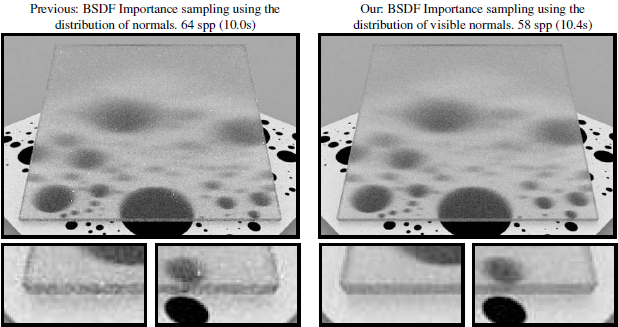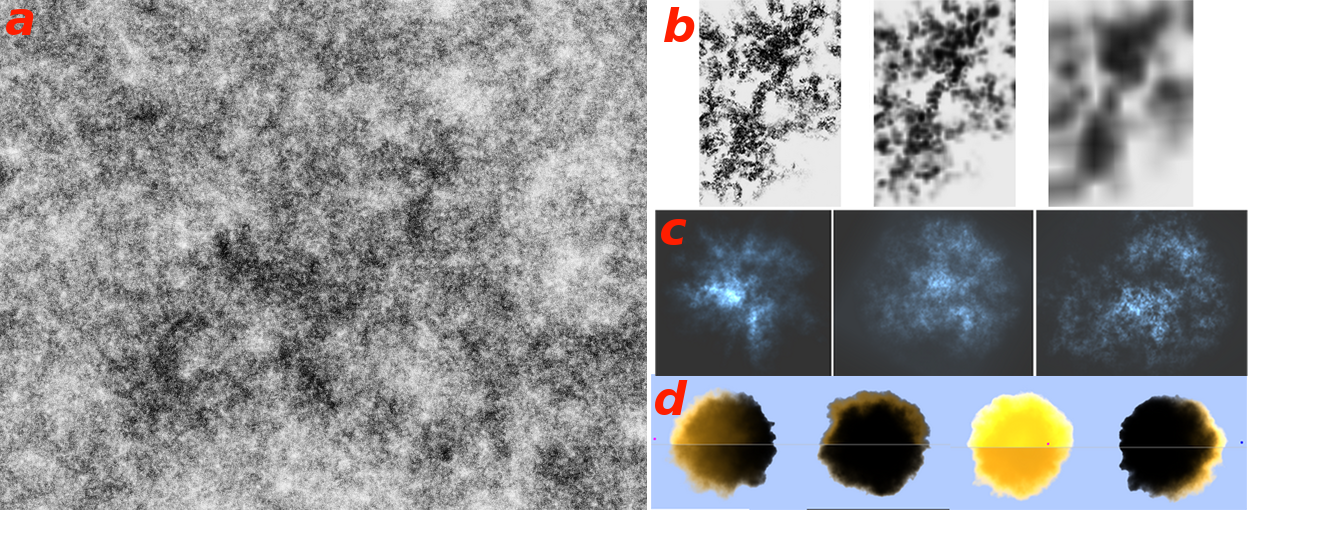Section: New Results
Complex scenes
In order to render both efficiently and accurately ultra-detailed large scenes, this approach consists in developing representations and algorithms able to account compactly for the quantitative visual appearance of a regions of space projecting on screen at the size of a pixel.
Surfacic appearance pre-filtering
Participants : Eric Heitz, Fabrice Neyret [contact] .
Here, we deal with complex surfaces represented by microfacets and material attributes.
Among the various correlations between material ingredients forming the BRDF, we published an extended version of the work on correlation between surface attribute (like color) and visibility [10] , and Eric published an comprehensive interpretation of the microfacet model in a journal in the field of physics [9] . He also adapted his microfacet approach to the efficient BRDF sampling for path tracing – published in EGSR/CGF [8] –, see Figure 11 , and he was invited to participate to the prestigious Siggraph Course “Physically Based Shading in Theory and Practice” [14] . This work is now implemented in various professional and standard software and thus settled a new standard. Eric defended his PhD on September, 26 2014 [3]
|
Volumetric appearance pre-filtering
Participants : Guillaume Loubet, Fabrice Neyret [contact] .
Here, we deal with complex density distributions. The first target is galactic material in the scope of the veRTIGE / Galaxy ANR project, but the long term goal is more general since at long distance complex surfaces or scattered objects can more efficiently be represented as volumetric distributions.
The usual hypothesis in CG is that volumes are homogeneous distribution of matter. But star and (dark) dust distributions are fractal, not homogeneous. This breaks all the existing equations accounting for large scale opacity and lighting of volumes of such material.
first, we developed a new procedural noise able to easily mimic such fractal distributions according to astrophysical models (see fig 12 ,a). Then we studied how to reproduce the same opacity (fig 12 ,b) and reflectivity (fig 12 ,c) for various level of details – this is still ongoing work.
Moreover, volumetric material is often concentrated into bodies, with a boundary delimited by a density jump or gradient. We studied the macroscopic light behavior in such configurations (fig 12 ,d).




